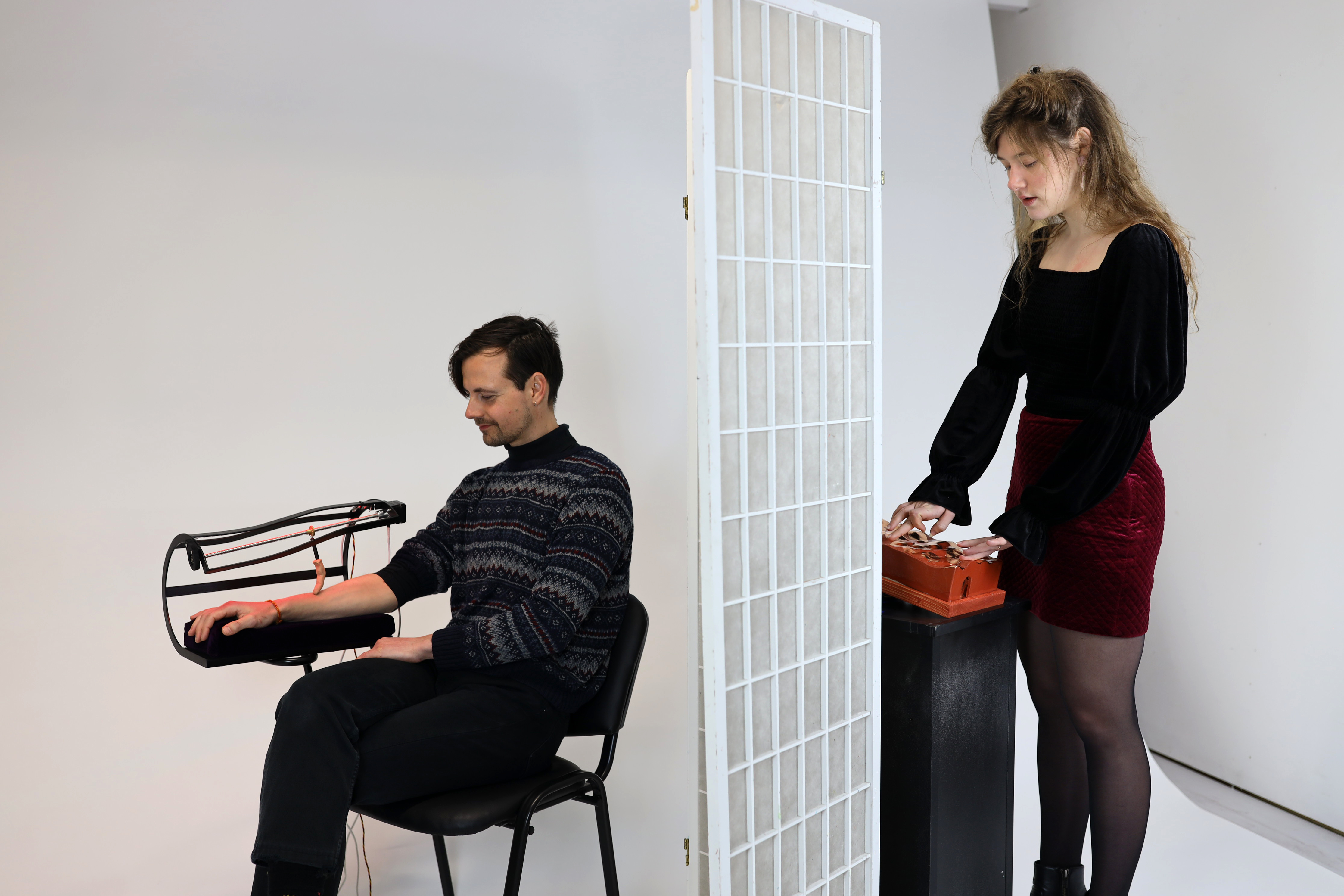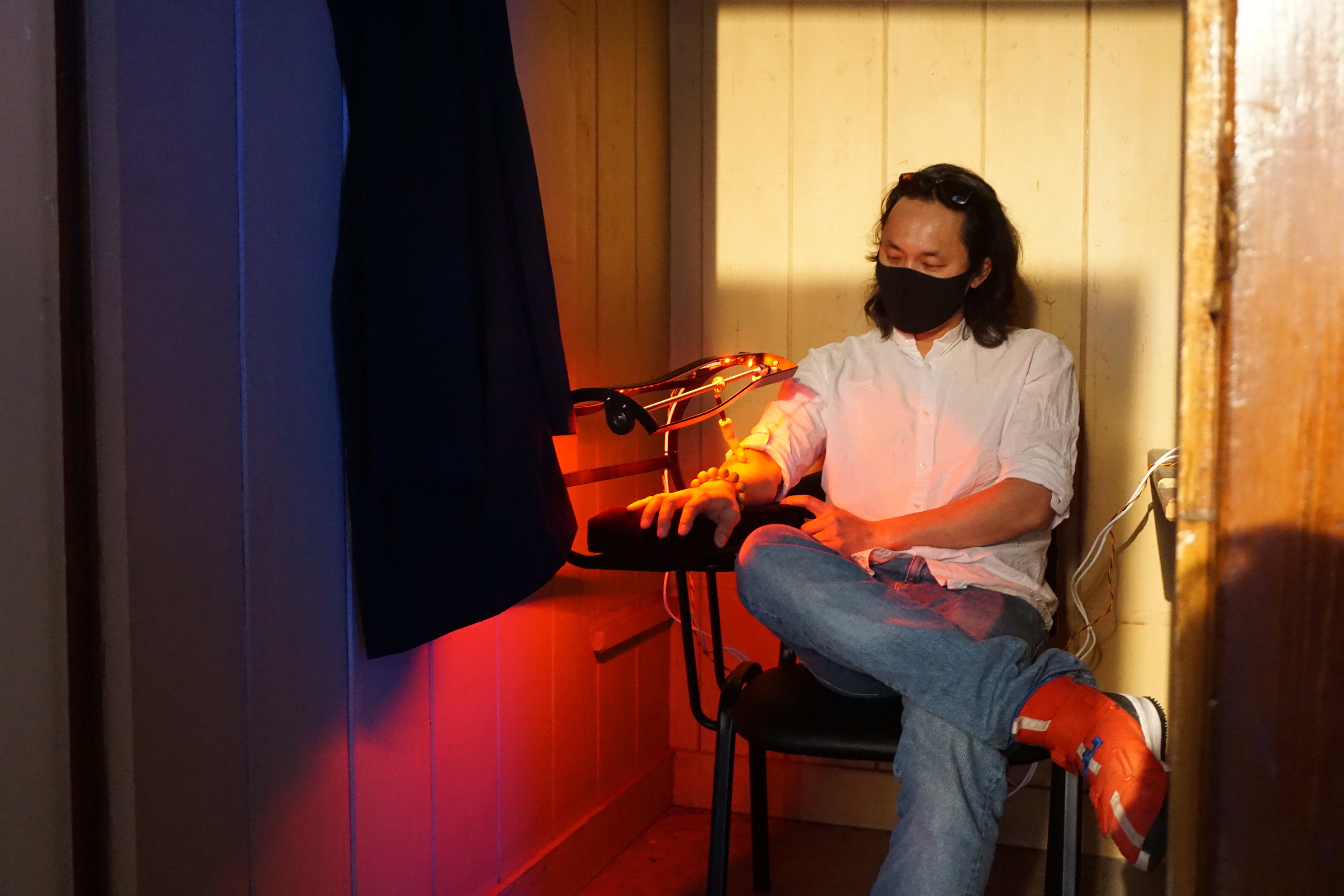






















Is it possible to create affectionate touch without skin-to-skin contact and without the incentive coming from the closely related? Can a tactile art installation take away prejudice? These were the main research questions for Future Affair, a cross-disciplinary project that provokes thought about the importance of interpersonal touch, encouraging audiences to explore trust, connection, and emotion.
The pilot for the Future Affair project was an interactive artistic rumination on the human desire for contact -exacerbated by COVID-19– and taking inspiration from research on the role of C-Tactile Afferents, which are low-threshold unmyelinated afferent nerve fibres that respond vigorously to slow stroking touch.
The prototype consisted of two components: a caressing robot and an interactive control sculpture. A participant, The Touched, sat in a chair and placed their arm on a supportive pad. Suspended above The Touched’s forearm hung a lifelike silicone finger, connected to a lead screw mechanism. The position of the finger could be changed by a stepper motor to create a slow stroking motion of 3.1 cm/s (which is within the CT-afferent optimal range). The other participant, The Conductor, stood in front of a ceramic sculpture which was slightly angled and heated to skin temperature. It consisted of a touch-sensitive undulating surface sculptured to steer The Conductor’s fingers along a particular path. As The Conductor engaged with the sculpture, it sensed hand position and delivered a control signal to the stepper motor. Additionally, The Conductor experienced their own touch through a series of vibrotactile actuators (ERMs) and LEDS embedded within the surface of the sculpture.
- technical design Amy Den Dekker
- superviser, mechanical engineer Daniel Shor
- research Gijs Huisman, TU Delft
- in collaboration with VibeResearch Lab, TU Delft IDE
- Metalwork and armrest done by Gwion Lopez
- with the kind support of Fonds ZOZ Academy
Related shows:
-
14.11.2023: IDFA DocLab Forum Market until 14.11.2023- Felix Meritis
- Pitch Presentations
-
11.02.2021: Young Art Festival until 28.02.2021- De Goede Raadkerk
- group exhibition














































